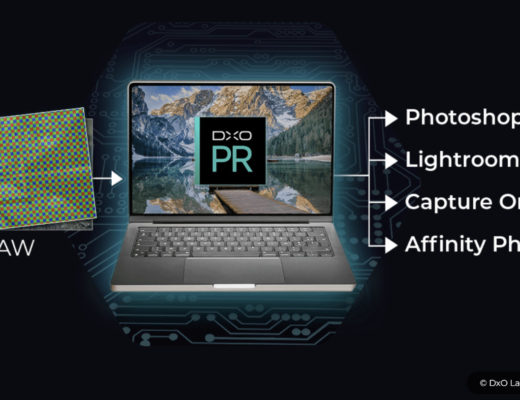 The new DeepPRIME XD2s pushes the boundaries of RAW science and workflows are faster, but what will really get your attention is a new floating loupe and a unique Hue mask process for local adjustments.
The new DeepPRIME XD2s pushes the boundaries of RAW science and workflows are faster, but what will really get your attention is a new floating loupe and a unique Hue mask process for local adjustments.
One note to start with: I’ve spent the last days testing the software, and I’ve been so busy exploring the features I enjoyed the most that I lost the notion of time and was going to write this “first contact/review” tomorrow, after having spent the afternoon capturing the final images I needed for this “hands-on review”. Then I looked at the information shared with the press and saw that the embargo lifted today and not tomorrow – it already has, hours ago – and that I absolutely lost the notion of time the last couple of days. Main reason: a new Hue Mask in DxO PhotoLab 8 that is absolutely unique.
In my head, I was prepared to write my review tomorrow, but now that the embargo is lifted, I just sat down at my desk, eager to share the news with those interested, so they may download a trial version and see themselves why I am so excited with this version of DxO’s software. Before, let me share with you some of the official info about DxO PhotoLab 8.
 The new DeepPRIME XD2s
The new DeepPRIME XD2s
Version 8 features the new DeepPRIME XD2s, the second generation of what DxO says is “the most advanced noise reduction and detail extraction technology on the market.” Enough has been written about RAW processing in DxO PhotoLab, so no need to repeat myself: this is even better, and there are enough images around now, already, to show what it does to reduce noise in images.
DxO has been at the forefront of RAW processing for more than 20 years, with its continuing research pioneered by the industry’s leading scientists. DeepPRIME XD2s is the pinnacle of this technology, giving unprecedented levels of noise reduction and detail extraction. With it, photographers can use higher ISO settings with confidence, breathe new life into old shots, and enjoy previously unseen image quality from even the latest cameras.
“This is the ultimate editing software for anyone passionate about photography,” explains VP of Product Strategy Jean-Marc Alexia. “The noise reduction and detail extraction is like nothing you’ve seen before, and its refreshed tools and new features give photographers more precision than ever before.”
 Tone Curve with dedicated Luma control
Tone Curve with dedicated Luma control
This version also expands on what the software can do to improve lenses. Even the best lenses lose sharpness towards the edge of the frame. To rectify this, DxO PhotoLab offers a unique approach to optical sharpening. DxO Optics Modules are mathematical models developed from observing the performance of each lens across the entire field of view and focal range.
These models ensure precise, incremental levels of sharpening depending on the characteristics of the lens. According to the company, “software that uses global sharpening cannot compete with DxO’s laboratory-based lens testing.” With PhotoLab 8, new exclusive lens softness algorithms reveal detail without adding fringing artifacts in high-frequency areas, bringing a new level of performance.
DxO PhotoLab 8 introduces a unique and freshly enhanced Tone Curve with dedicated Luma control, making one of the most powerful tools at a photographer’s disposal even more… powerful. The Tone Curve in PhotoLab is now the best on the market thanks to a number of upgrades, says DxO, noting that “version 8 adds on-image control whereby photographers can edit the curve by selecting the Tone Picker and then clicking and dragging on the part of the image that relates to the tones they wish to adjust. “
 Smarter, faster workflows
Smarter, faster workflows
The brand-new Luma channel sits alongside the Red, Green, and Blue channels and lets photographers make tonal adjustments without impacting color levels, avoiding unwanted or unexpected color shifts when modifying brightness.
Four more improvements were made to increase usability. First, it now displays the histogram to guide adjustments. Second, photographers now get a visual cue when making changes to the RGB channels thanks to bi-color tints in each graph using the relevant colors. Third, each point on a curve has an editable number value allowing photographers to dial in very precise changes. Finally, photographers can save their own presets.
PhotoLab 8 also introduces a new Compare Mode, a step to make for smarter, faster workflows. It allows for a more precise editing, as it lets users set an image as a reference from which to match their adjustments. The main viewer also has a new Correction Rollover that delivers a live preview of effects when the cursor hovers over rendering settings (for example, Color Renderings, LUTs, Tone Curve Presets) making corrections more fluid. And to boost workflow speed, browsing and loading images are accelerated across the board.
 A large live preview magnifier
A large live preview magnifier
While some of these developments were expected and part of the evolution of a software, two things, which I kept for last, were in the wish list of many but no one was expecting them so soon: an essential large live preview magnifier and Hue Mask, both deserving some explanation.
The large live preview magnifier is introduced to shows photographers exactly how their images will be improved by the software’s DeepPRIME engines, so you’re able to preview RAW denoising and demosaicing in full quality., But the loupe can also be used to preview Exposure, ClearView, Smart Lighting, Tone Curve, etc.

The tool helps photographers to immediately assess the performance of noise reduction; for example, it’s possible to see how far an image can be pushed when taking advantage of the extra stops of exposure offered by DeepPRIME. Offering a zoom of up to 1600%, photographers can visualize the benefit of class-leading demosaicing and denoising, and it displays every aspect of the edit, creating the most holistic PhotoLab workflow to date.
 Hue Masks and Local Adjustments
Hue Masks and Local Adjustments
It’s a joy to use, believe me, and some of the images published here show what it does… but you really must try it, to discover your own images. The second feature that got me hooked for days is something we all wanted: a way to change the hue in an area of a photo without affecting the rest. The new Hue Masks offer exactly that, as they allow you to pick from eight predefined hues or sample directly from the image before fine-tuning the selected range, which they can accomplish by using either the Brush/Eraser tool or the micro input and output controls.
 The Hue Masks have kept me playing with different images for the last couple of days, amazed at how they help to achieve peerless precision. Powerful and ultra-accurate, these masks let photographers pick out individual hues and hue ranges for targeted editing. There is a learning curve to understand the concept, but the more you try them the easier it becomes to understand what they offer in terms of playing with color and local adjustments in your photos.
The Hue Masks have kept me playing with different images for the last couple of days, amazed at how they help to achieve peerless precision. Powerful and ultra-accurate, these masks let photographers pick out individual hues and hue ranges for targeted editing. There is a learning curve to understand the concept, but the more you try them the easier it becomes to understand what they offer in terms of playing with color and local adjustments in your photos.
 What I found, from the experience, is that you do need a powerful machine to make the process flow – my older Intel 9700K on an RTX 2070 showed its age – but the results are astonishing. Also, if you use RAW files as your starting point, you’ll have more options – as expected – in term of adjustments. But the magic that Hue Masks bring to the table – and a faster, much faster workflow – are One good reason to buy DxO PhotoLab 8. But as I’ve shown here, there are many other reasons that justify the investment in a perpetual license for the software, which costs $ 229, or $109 for an upgrade.
What I found, from the experience, is that you do need a powerful machine to make the process flow – my older Intel 9700K on an RTX 2070 showed its age – but the results are astonishing. Also, if you use RAW files as your starting point, you’ll have more options – as expected – in term of adjustments. But the magic that Hue Masks bring to the table – and a faster, much faster workflow – are One good reason to buy DxO PhotoLab 8. But as I’ve shown here, there are many other reasons that justify the investment in a perpetual license for the software, which costs $ 229, or $109 for an upgrade.
DxO PhotoLab 8 (Windows and macOS) is now available for download on the DxO website (https://shop.dxo.com/). It’s also available as part of a bundle with DxO FilmPack 7, the software that brings back the timeless magic of film, for $ 299. A free, 30-day trial is available from the DxO website.

Filmtools
Filmmakers go-to destination for pre-production, production & post production equipment!
Shop Now












